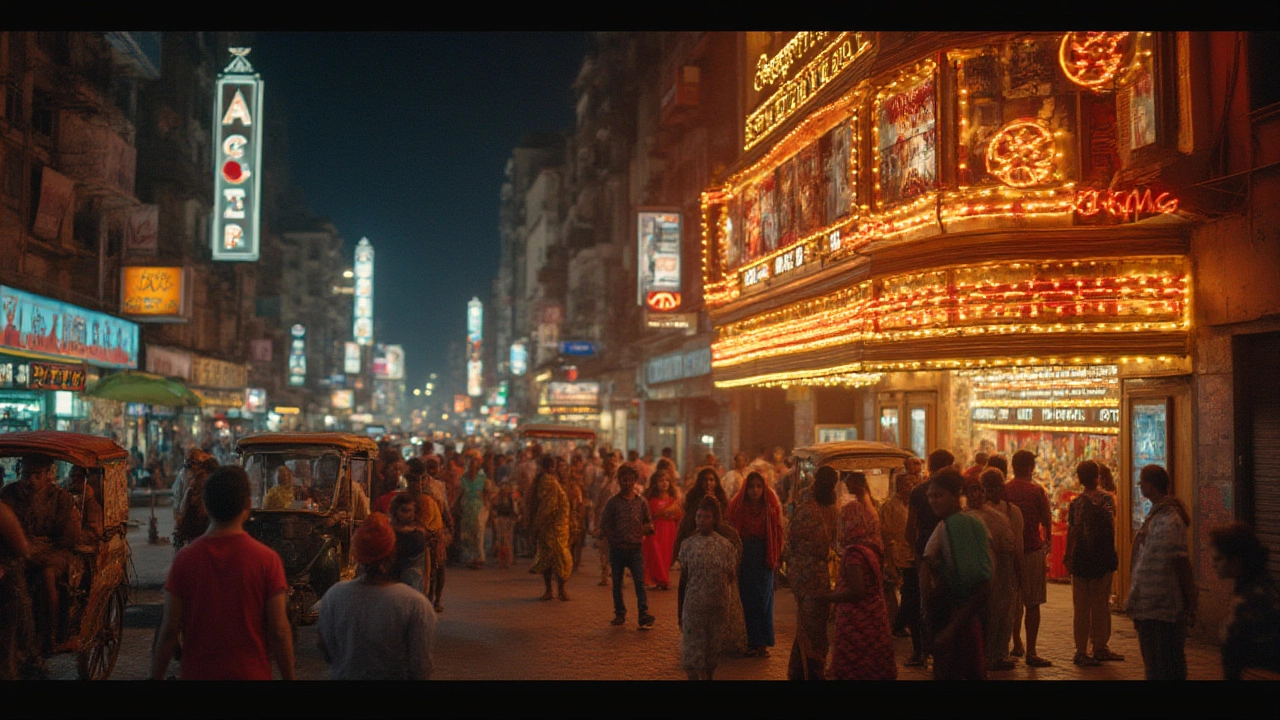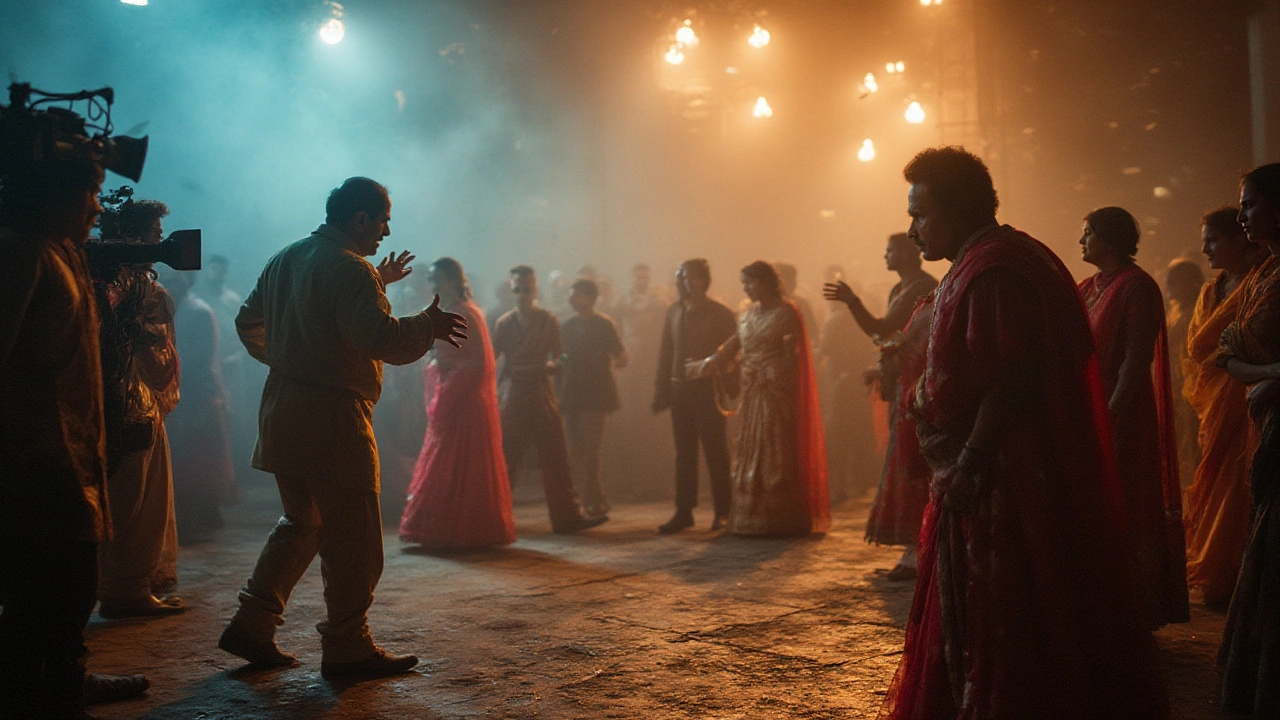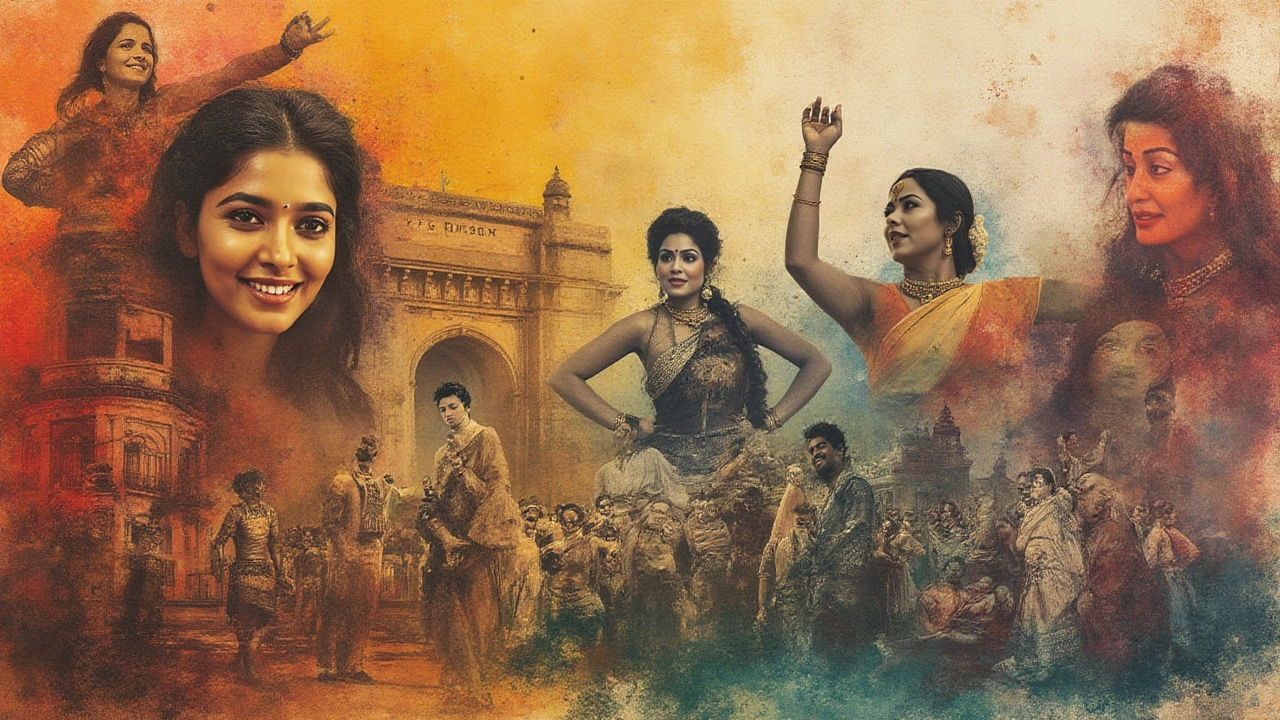Why Mumbai is Called Bollywood: History, Culture, and the Rise of Indian Cinema
 Jul, 12 2025
Jul, 12 2025
Picture it: sound stages bustling around the clock, colourful costumes spilling into narrow city streets, and the rattle of film cameras echoing above the din of Mumbai’s daily life. Ask anyone in India where Bollywood is, and they’ll answer without hesitating—Mumbai, of course. Even though “Bollywood” is often used around the world as a synonym for Indian cinema, it’s got roots tangled deep in Mumbai’s energy and history. But how did Mumbai actually end up as Bollywood? Pull the thread and you’ll find a mashup of colonial history, global influences, and a swirl of local ambition. Even most locals don’t know the wild details of how the term stuck or what it reveals about India and its movies.
The Birth of Bollywood: Why Mumbai Became the Center of Indian Cinema
Mumbai and movies seem inseparable today, but it wasn’t always that way. Back in the late 19th century, Mumbai—called Bombay back then—was just waking up as a booming port and cosmopolitan city. Films had just about made their debut in Paris, and within a few years, screenings were happening in Mumbai’s Watson Hotel. By 1913, Dadasaheb Phalke, usually called the father of Indian cinema, decided to try making India’s first feature film. So he set up his camera and crew not in Delhi or Kolkata, but right in Mumbai, with its patchwork of neighbourhoods and a thriving middle class hungry for new entertainment.
So why did everything kick off here? Mumbai’s location mattered. As a port, it welcomed people, goods, and new trends crossing the Indian Ocean and coming from the West. Bollywood’s roots are tangled with Parsi theater, folk drama, and the magic lantern shows that toured the region. Mumbai was already a melting pot, so new art forms took off like wild-fire. By the 1920s, studios like Bombay Talkies and Prabhat Film Company were cropping up, run by risk-takers drawn to the promise of glamor. Over a few mad decades, small makeshift studios sprouted in neighborhoods like Dadar and Andheri—some made of tin and bamboo, some fancier.
By the 1940s and ’50s, film was the new king of Indian pop culture. Talent from across the subcontinent—actors, directors, music composers, dance choreographers—came chasing the dream. Song-and-dance became the signature. Mumbai’s mix of languages and communities fed creative expression and made its films relatable all over India. This is when the city started flirting with Hollywood-style studios, but on decidedly desi terms.
There’s also the behind-the-scenes world that got built around the studios: tailors who specialized in glittering costumes, palace-hotels used as filming locations, snack vendors who fed hungry extras. Anyone in Mumbai with enough hustle could break into the world of movies. It wasn’t all silver screens and stardust—sometimes, a single studio set would be used by six productions at once. To this day, many of the biggest Bollywood blockbusters are shot right in the city, often in locations just around the corner from millions of everyday Mumbaikars.
Why “Bollywood”? The term itself is a mashup—‘B’ for Bombay, and ‘ollywood’ lifted straight from ‘Hollywood.’ The nickname supposedly sprang up in the late 1970s, partly as a cheeky nod and partly as an act of defiance. While some in India roll their eyes at this ‘copycat’ name (arguing it puts Indian cinema in Hollywood’s shadow), it’s become part of global pop culture. If you’re scrolling Netflix from Madrid to Manila, ‘Bollywood’ instantly means glitzy Indian musicals, epic dramas, and upbeat romances—and it all circles back to Mumbai.

Bollywood’s Unique Identity: How Mumbai Shaped the Films
What makes Bollywood different from just another film industry? A lot of it comes down to Mumbai’s sprawling personality. Step off a suburban train and you’ll see exactly the kind of frantic chaos that ends up on screen. Urban grit, hustle, and hope are baked into the stories people flock to see.
Mumbai’s song-filled DNA is really the secret sauce. Unlike Hollywood, where music often stays in the background, in Bollywood it’s often the core of the film. Mumbai’s music scene, with its studios and legendary playback singers, fed an endless stream of hits. Lata Mangeshkar and Kishore Kumar are household names, but it’s the wild mix—classical ragas, jazz, disco, hip hop—that gives Bollywood its unpredictable flavour. It’s no accident that radio stations in Mumbai would blare out the latest film anthems before anywhere else.
Location plays a huge part too. Recognize those crowded bazaars, fancy Marine Drive, or the local train stations in films? That’s real Mumbai, not a studio set. Directors like Mehboob Khan and Guru Dutt started making these neighbourhoods part of the narrative. In “C.I.D.” you’ll see the city’s rainy alleyways; in “Bombay” the grand gothic architecture grabs the spotlight; and in “Slumdog Millionaire,” Danny Boyle catches both the city’s grit and glamour (even though it’s a British film, it dived into Mumbai for authenticity).
Bollywood stories are famously over-the-top, but a lot of that drama mirrors Mumbai’s day-to-day grind—massive migration, dreams of making it big, families dealing with change. Imagine living in a city where a taxi driver, after a lucky break, might land a small part in a movie. There are thousands of stories of stars like Amitabh Bachchan or Shah Rukh Khan arriving in Mumbai broke and unknown, only to leave with their faces posted on billboards. If you wander past Bandra or Juhu, you’ll spot crowds outside homes of their favourite actors, hoping for a glimpse.
Bollywood’s identity really isn’t just about the movies; it’s also about the communities built around it. There are dance academies in Mumbai where kids copy the latest dance crazes, local wedding bands that specialize in Bollywood hits, and fashion designers who get their first big breaks making movie costumes. The city acts as Bollywood’s muse, backdrop, and noisy lifeblood.
It’s also important to mention the huge influence Mumbai’s diversity has had on Bollywood films. The city is home to Gujaratis, Maharashtrians, Tamils, Sindhis, Parsis, Christians, and many more, each bringing their language, style, and food to the scene. This cultural salad bowl helped Bollywood churn out films that felt familiar everywhere—from Delhi’s fast-talking markets to rural villages in Kerala. You see this clearly in the way “masala movies”—big, multi-genre blockbusters—reflect Mumbai’s anything-goes spirit.
Here’s a fun fact: most of Bollywood’s stars don’t even come from Mumbai, but the city lures them in with dreams and stage lights. And once they’ve arrived, the city becomes as much a star in their films as the actors themselves.

The Global Reach of Bollywood: Mumbai’s Place on the World Stage
These days, Bollywood—rooted in Mumbai—is as global as K-pop or the Marvel Cinematic Universe. Indian films now release simultaneously across dozens of countries. NRI (Non-Resident Indian) audiences in the UK, Canada, and Africa helped push Bollywood’s songs and style to new fans, making “Bollywood nights” a real thing in places like Birmingham—my own home city.
Some people joke that you can find a Bollywood fan anywhere, from remote towns in Russia to the heart of Lagos. Madhuri Dixit, Shah Rukh Khan, Aamir Khan—their faces camp outside Indian grocery stores from the US to Singapore. It’s no surprise to see Mumbai’s biggest film festivals draw crowds from well outside India, with press and producers always scouting for the next crossover hit.
But here’s the twist: the gigantic industry that grew up in Mumbai churns out far more films each year than Hollywood does—and it’s not slowing down. The city’s iconic Film City complex sprawls over 500 acres, with dozens of sets running at any moment. And behind every hit, there’s an army of workers, from lighting technicians to spot boys, whose families have been a part of Bollywood for generations. Often, film crews will wrap up one shoot and jump straight to the next, right in the heart of Mumbai’s sweltering humidity.
Mumbai’s energy, never-ending supply of hopefuls, and can-do attitude drive Bollywood’s global success. When “Dilwale Dulhania Le Jayenge” ran for years in Mumbai’s Maratha Mandir theatre, it turned into a rite of passage for fans. Global music charts sometimes light up with Bollywood tracks, and you can see a classic Shah Rukh Khan move copied in clubs halfway across the world. Mumbai’s film industry even inspires filmmakers in Nigeria’s Nollywood, Egypt’s Arab cinema, and Turkey’s Yeşilçam, proving the city’s cultural footprint is massive.
Yet, Bollywood’s grip on Mumbai isn’t without challenges. Rising property prices, high production costs, and shifts to digital streaming are changing the landscape. But every Sunday morning, you’ll still see long queues outside cinema halls in Andheri and Parel. Fans debate the latest gossip, eagerly wait for trailers, and keep the city’s movie-watching tradition alive.
Want to get closer to the Bollywood scene? Many travellers (and a few locals, if they’re lucky) try to land a spot as an extra, haunting casting agents along Carter Road or checking out open calls on WhatsApp groups. Film tours around Mumbai—dodging the local traffic—show off iconic studios and even offer the odd chance to catch a real shoot in action. The city keeps pulsing to the rhythm of movie-making, 365 days a year.
So, when someone asks why Mumbai is called Bollywood, it’s not just about the nickname. Mumbai is where Indian cinema’s heart beats, where films are dreamed up, shot, and sent out to millions. This city shapes the way India and the world sees Bollywood—and Bollywood, in turn, shapes Mumbai every single day.